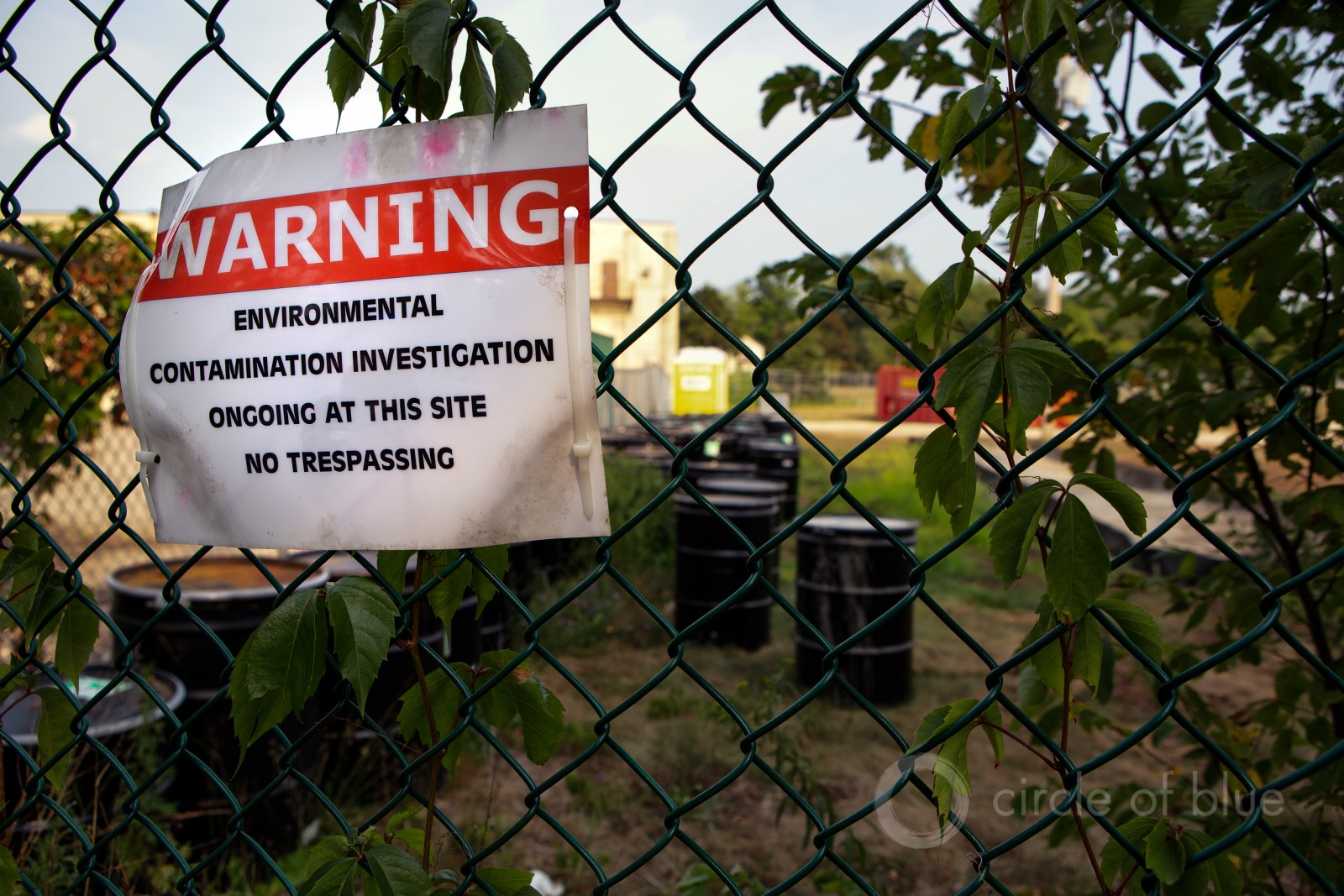Confusion runs rampant about PFAS dangers. The federal government and states can’t agree on how much is unsafe for states. Here’s a primer on what’s known so far.

Photo © J. Carl Ganter / Circle of Blue
By Jim Malewitz, Bridge Magazine
LANSING — Industrial chemicals known as PFAS have been linked to serious health risks. But nobody agrees on how much is unsafe.
The federal government has yet to develop a nationwide standard for PFAS in drinking water, and few states have crafted regulations of their own. Those that have — including New Jersey, Vermont and Minnesota — all have different standards.
And a recent draft report from the U.S. Centers for Disease Control suggests PFAS could be risky at far lower levels that previously believed.
Confused? You’re not alone.
“It’s really no wonder that the average American is driven to wonder whether their drinking water is safe,” Lisa Daniels, director of Pennsylvania’s Bureau of State Drinking Water and president of the Association of State Drinking Water Administrators, told a U.S. House committee this month at a hearing probing PFAS concerns.
Here’s a primer on all the numbers related to PFAS – shorthand for per- and polyfluoroalkyl substances – and why they matter.
But first, where did PFAS come from?
Because they can reduce friction, types of PFAS have been used to manufacture everything from Teflon and Scotchgard water repellent to firefighting foam. U.S. manufacturers have largely phased out types of PFAS that are more problematic, but those chemicals are still used internationally to make products that may be imported.
How are PFAS hazardous?
Research is still evolving. The two most studied types of PFAS are called PFOA (perfluorooctanoic acid) and PFOS (perfluorooctane sulfonate). The most consistent findings of exposed populations have linked the chemicals to low birth weights, immune system troubles, thyroid problems and cancer, according to the EPA.

Photo © J. Carl Ganter / Circle of Blue
How much do the feds say is too much PFAS?
The EPA has no drinking water standard for PFAS. That means the agency has no legal leverage to force a water system to address contamination. In 2016, however, the agency set a health advisory level: 70 parts per trillion for combined PFOA and PFOS over a lifetime. (Think of one part per trillion as a grain of sand in a swimming pool.) Exposure above the health advisory threshold is seen as a health risk, but the standard is unenforceable.
In June, however, another federal agency offered different guidance.
A draft report from the Agency for Toxic Substances and Disease Registry, part of the Centers for Disease Control, produced a “minimal risk level” far below the EPA threshold: 7 parts per trillion for PFOS and 11 parts per trillion for PFOA.
What do states say?
A few states have come up with their own numbers.
New Jersey recently adopted standards for three kinds of PFAS (14 parts per trillion each for PFOA and 13 parts per trillion each for PFOS and another substance called perfluorooctanoic acid or PFNA).
Minnesota last year set an advisory level for PFOA at 35 parts per trillion and 27 parts per trillion for PFOS.
Vermont’s 20 parts per trillion drinking water standard applies cumulatively to five different PFAS chemicals.
How much PFAS is too much according to Michigan officials?
Michigan has no formal drinking water standard, but state regulators generally defer to EPA’s 70 parts per trillion advisory. In January, the Michigan Department of Environmental Quality set state’s cleanup criteria at that level, allowing Michigan to sue Rockford-based shoe company Wolverine Worldwide — an effort to hold the company accountable for pollution in Kent County.
Michigan health and environmental regulators have generally used the EPA number in communicating health risks.
How much PFAS is in Michigan drinking water?
The Michigan Department of Environmental Quality is testing all state public water supplies and at schools with private wells for PFAS. As of mid-September, results trickled in from 641 of 1,238 samples. The breakdown:
- 615 sites between 0 and 10 parts per trillion;
- 25 sites between 10 and 70 parts per trillion;
- Just one site — Parchment, near Kalamazoo — was above 70 parts per trillion (The town registered more than 20-times the EPA advisory and switched voluntarily its water source with help from the state.)
For specific results, visit this Michigan web page.

Photo © J. Carl Ganter / Circle of Blue
Should Michigan set a drinking water standard?
Yes, say environmentalists, community activists and some lawmakers.
Last December, state Rep. Winnie Brinks, D-Grand Rapids, introduced legislation to set a drinking water standard for PFAS at 5 parts per trillion, lower than any other state. She and other Democrats chided House Republicans for failing to schedule a hearing on the bill.
Some experts question the wisdom of allowing lawmakers to set such a scientifically based standard.
“The judgment about that should be made on several lines of evidence” including research in toxicology and environmental engineering, said David Savitz, professor at the Brown University School of Public Health and chairman of Gov. Rick Snyder’s scientific advisory committee on PFAS.
“That is a really complicated, technical judgement, and it can’t be made on just what the public would like to see.”
Brinks said her proposal is based upon research from Philippe Grandjean, a professor of environmental health at Harvard College, who suggests the health threshold should be as low as 1 part per trillion.
“We had to start low, but low enough so we could meaningfully understand what’s in the water. So we landed at 5 [parts per trillion],” Brinks said.
Why not wait for the EPA or DEQ to set a standard?
“Waiting when this stuff is really harmful is not responsible,” Brinks said.
Would a state or federal drinking water standard carry costs?
Sure. It would force contaminated water systems to install special filtration systems or switch to a cleaner water source — neither of which are free.
In a 2017 proposal, New Jersey estimated public drinking water systems would pay about $2,000 for quarterly testing in the first year. And prices for a “granular activated carbon” system that could filter out PFAS ranged from $500,000 to $1 million, according to New Jersey’s Drinking Water Quality Institute, a state research panel.
Keith Cooper, chairman of the institute and a Rutgers University professor, said New Jersey minimized disruption among utilities by phasing in its standards.
“A lot of the water purveyors knew this was coming already,” he said.
So which number should the public care about?
Savitz, the chairman of Snyder’s advisory committee, cautioned against putting too much stock in one number, and instead consider the range for concern recent research has outlined: somewhere between 10 and 70 parts per trillion.
“That may sound like a big difference,” he said. “But in the kind of speculation that goes into making these estimates, that’s actually pretty close to one another.”
And even within that range, health effects aren’t certain, Savitz added.



